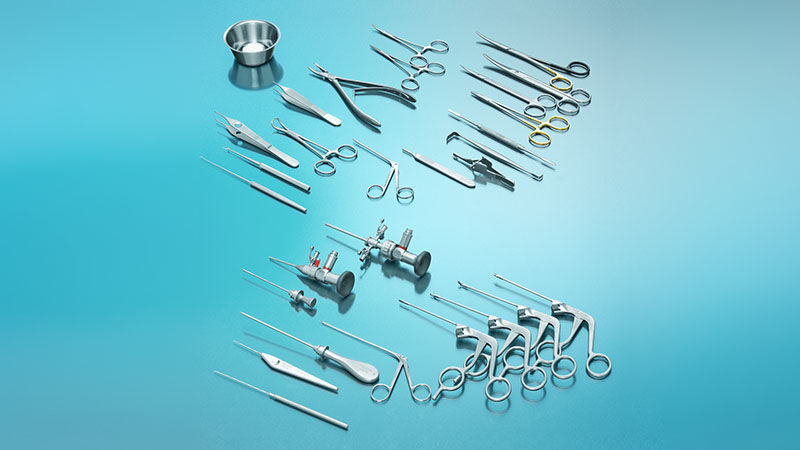Arthroscopy has completely transformed how doctors perform joint surgeries. Gone are the days of large incisions and long recovery times. With arthroscopy, surgeons can now diagnose and treat joint problems using tiny instruments and cameras inserted through small incisions. This minimally invasive technique has become a popular choice due to its reduced healing time, minimized scarring, and lower risk of complications. Whether you’re dealing with a torn meniscus or shoulder impingement, Arthroscopic Instruments surgery has made joint repair less painful and more efficient for patients across the globe.
What Are Arthroscopic Instruments?
Arthroscopic instruments are specialized tools that allow surgeons to perform these minimally invasive surgeries. These instruments enable surgeons to access the joint through small incisions and work within tight spaces. Using a combination of video cameras, fluid management tools, and precision cutting devices, surgeons can operate with high accuracy and minimal disruption to surrounding tissue.
Now, let’s dive into the top 5 arthroscopic instruments and understand their uses.
The Top 5 Arthroscopic Instruments
1. Arthroscope
The arthroscope is perhaps the most crucial tool in any arthroscopic surgery. This small, flexible camera allows the surgeon to see inside the joint in real time, magnifying the surgical area on a screen. The arthroscope serves as the surgeon’s “eyes,” providing a detailed, close-up view of the inside of joints such as the knee, shoulder, or ankle. Its main function is to help diagnose conditions and guide other instruments during surgery.
2. Cannulas
A cannula is a small tube that provides a passageway for the surgeon’s instruments to reach the joint. In arthroscopic surgery, cannulas are essential for fluid management. They allow saline to flow into the joint, expanding the area and giving the surgeon a clearer view while keeping the instruments clean and debris-free. Cannulas also serve as portals for the other surgical tools, ensuring a smooth and controlled entry into the joint.
3. Arthroscopic Shaver
The arthroscopic shaver is designed for removing damaged or unwanted tissue from the joint. Equipped with a rotating blade, the shaver is used to clean up areas affected by injury or arthritis. It can also be used to trim away any bone spurs or debris that may be causing pain or limiting movement. The precision of the shaver ensures minimal damage to the surrounding tissues.
4. Graspers
Graspers are the “hands” inside the joint. These instruments are used to hold, manipulate, and sometimes remove tissue from within the joint. Whether it’s pulling out loose cartilage or stabilizing a structure while another tool is used, graspers play an essential role in the manipulation of tissue during arthroscopy.
5. Radiofrequency Probes
Radiofrequency probes have become an invaluable tool in arthroscopic surgery, especially when it comes to tissue cutting and bleeding control. These probes use high-frequency energy to cut tissue and coagulate blood vessels, minimizing bleeding. This not only provides a clearer view during surgery but also promotes quicker recovery as it reduces damage to healthy tissue.
Detailed Functionality of Each Arthroscopic Instrument
Arthroscope: The Eye of the Surgeon
The arthroscope is a fiber-optic camera that provides a high-resolution image of the joint’s internal structure. There are two primary types: rigid and flexible arthroscopes, both designed for different joints. Rigid scopes are often used in joints like the knee, while flexible ones can access areas like the shoulder and elbow, where movement is more complex. The clarity provided by the arthroscope allows surgeons to pinpoint the issue and operate with minimal disruption.
Cannulas: The Gateway for Instruments
Cannulas are tubes inserted into the joint to help guide other tools inside. They are often used alongside suction devices to maintain a clear field of vision for the surgeon. Cannulas also allow the introduction of saline solution into the joint, ensuring that the space remains inflated and that debris is flushed away.
Arthroscopic Shaver: A Precision Tool
The shaver’s main purpose is to remove soft tissues, such as damaged cartilage or inflamed synovium. Different blade attachments allow the surgeon to adjust the tool based on the tissue type and the amount of removal needed. The shaver’s ability to make clean, precise cuts helps in restoring normal joint function.
Graspers: Surgeon’s Hands Inside the Joint
Graspers are used to hold and manipulate tissues within the joint. They come in various designs, including smooth, serrated, and toothed, depending on the task at hand. For example, smooth graspers are used for delicate tissues, while toothed ones help in handling firmer structures like bone or tendons.
Radiofrequency Probes: Precision in Cutting and Sealing
These probes utilize radiofrequency waves to cut tissue and seal blood vessels simultaneously. By minimizing bleeding and reducing heat damage to surrounding areas, they allow for precise cuts and improved healing times. Radiofrequency technology is particularly useful in surgeries where minimizing blood loss is essential.
Benefits of Using Arthroscopic Instruments
The main advantage of arthroscopic surgery is its minimally invasive nature. Patients benefit from smaller incisions, reduced post-operative pain, and quicker recovery times. The high precision of the instruments used also allows for better outcomes, as surgeons can operate with greater control and accuracy.
Common Procedures Performed Using Arthroscopic Instruments
Some of the most common surgeries using arthroscopic tools include:
- Knee arthroscopy – for meniscus tears and ligament repairs.
- Shoulder arthroscopy – for rotator cuff tears and labral repairs.
- Elbow and wrist surgeries – to treat arthritis or remove loose bodies.
- Ankle arthroscopy – for ligament reconstruction and bone spur removal.
Innovations in Arthroscopic Technology
Advancements in technology have led to more precise instruments, improved imaging, and new techniques that continue to revolutionize the field. Instruments are now more flexible, durable, and versatile, allowing surgeons to perform more complex procedures with ease.
Conclusion:
Arthroscopy has transformed joint surgery, and the instruments used in these procedures have played a crucial role in improving patient outcomes. From the arthroscope to the radiofrequency probe, each tool serves a specific function that enables minimally invasive, highly effective surgery. As technology advances, we can expect these instruments to become even more precise, making recovery quicker and less painful for patients.
FAQs
- How long does it take to recover from arthroscopic surgery?
Recovery typically takes 6 to 8 weeks, but it can vary depending on the procedure and the patient’s overall health. - Are there any risks associated with arthroscopy?
As with any surgery, there are risks, including infection, bleeding, and nerve damage, though these are rare in arthroscopic procedures. - What type of anesthesia is used in arthroscopic procedures?
Local, regional, or general anesthesia may be used, depending on the complexity of the surgery. - How do surgeons decide which arthroscopic tools to use?
The choice of tools depends on the specific procedure and the surgeon’s expertise in handling the instruments. - Can arthroscopy be used for all joint-related issues?
While arthroscopy is versatile, it is not suitable for every condition. Surgeons decide based on the type of injury and the joint involved.
Go to Check – https://rigorinstruments.com/arthroscopic-surgical-instruments/








